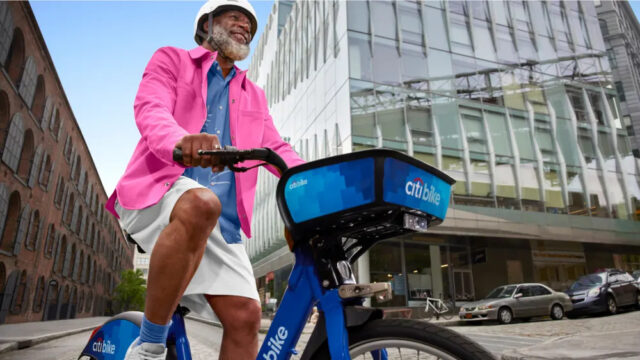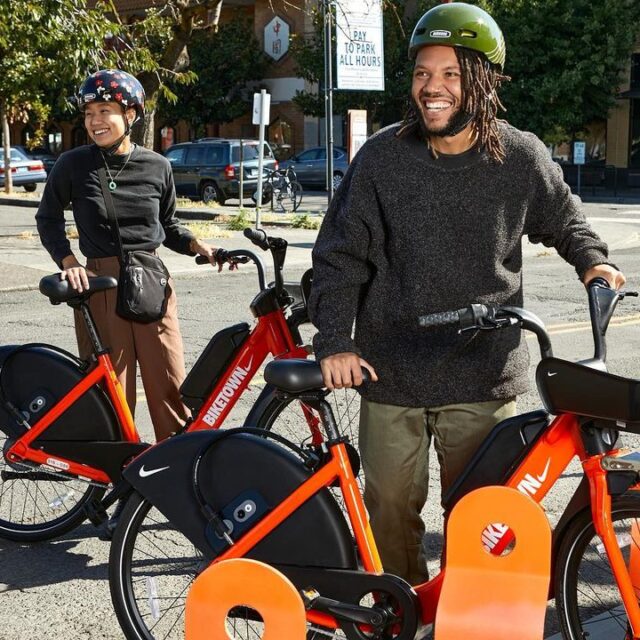Citi Bike’s 2023 Ridership Numbers Are Impressive
by Kiran Herbert, Communications Manager
May 30, 2023
Not only did the largest bike share system in the U.S. shatter its weekly ride record, but its reduced fare memberships are also up 40% year over year.

In early May, Citi Bike announced its best week ever, clocking 867,838 rides total, or roughly 124,000 per day. That’s a 30% increase from the same time last year (to date, Citi Bike ridership is up 26% for the year). While those incredible numbers are partially attributable to the beautiful spring weather, they’re also the result of safer infrastructure for bicycling, an ongoing service area expansion, and a notable increase in reduced fare memberships.
In most of New York City, “Citi Biking” is now a verb, an integral piece of the local transit system that’s as commonplace as (and sometimes more reliable than) jumping on the subway or catching a bus. However, people only bike if they feel safe doing so, and New York City’s commitment to bike infrastructure is undoubtedly part of the reason for Citi Bike’s growth.
During his 2021 mayoral campaign, Mayor Eric Adams promised to install 300 miles of protected bike lanes by the end of his first term. While his administration isn’t on track to hit that goal, 2022 was still a good year for bicyclists in the city, with 19.2 miles of new protected bike lanes. For the people that rely on bicycling for transportation and recreation, every new bike lane is a win. There’s also evidence that protected bike lanes are better for bike share — if the city actually hit its target and installed 50 new miles by the end of this year, imagine what that would mean for bike share ridership.

Map courtesy of Streetsblog NYC and the NYC Department of Transportation.
Largescale expansion is also another reason Citi Bike use is up. Since 2019, Citi Bike has been growing its footprint, creeping into more areas of Brooklyn, Queens, the Bronx, and even New Jersey. By the end of 2023, residents will be able to access bike share in all of the dark blue areas. Currently, Citi Bike — which is owned and operated by Lyft — has almost 30,000 bikes in operation across some 1,800 stations, making it by far the largest bike share system in the United States.
While there are obviously large swaths of the city without bike share (including all of Staten Island), Citi Bike’s system footprint loosely coincides with the areas of New York City where car ownership is the lowest, fulfilling a mobility need for many. Notably, reduced fare memberships are also up nearly 40% year over year (from 11,365 to 15,774 members), highlighting how bike share is helping those who make the least amount of money in the city get around.
During May’s record ride week, reduced fare members took 12.5% of total rides. In 2022, those same members took an average of 238 trips, which is 77% more than Citi Bike members who pay full price (an annual membership currently costs $205 a year, whereas reduced fare members pay $5 a month).
All of this speaks to the critical role Citi Bike plays in New York City’s transportation landscape — for everyone but especially for historically underserved populations that are most in need of reliable, affordable mobility options. The fact that biking around on a beautiful spring day is just really fun is the cherry on top.
The Better Bike Share Partnership is funded by The JPB Foundation as a collaboration between the City of Philadelphia, the National Association of City Transportation Officials (NACTO), and the PeopleForBikes Foundation to build equitable and replicable bike share systems. Follow us on LinkedIn, Facebook, Twitter, and Instagram, or sign up for our weekly newsletter. Have a question or a story idea? Email kiran@peopleforbikes.org.



